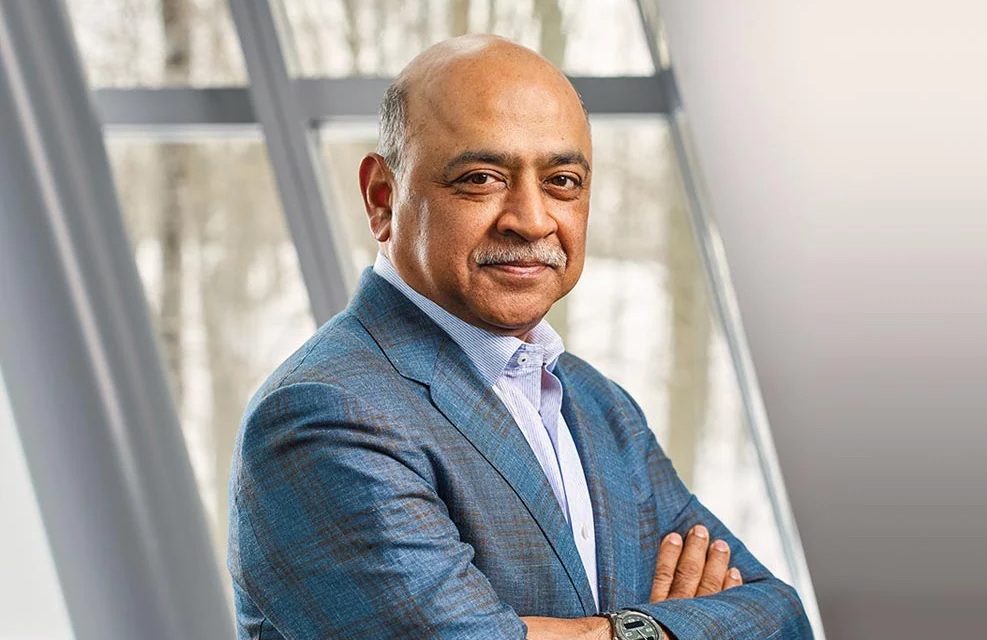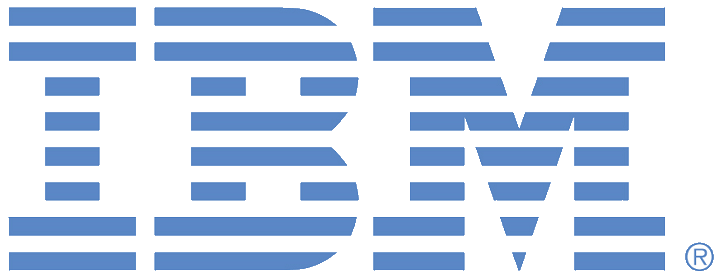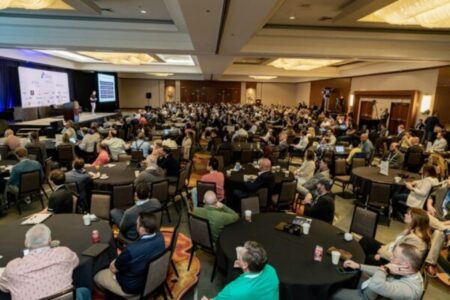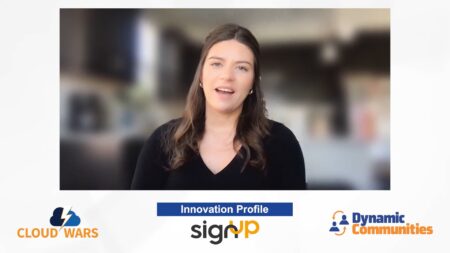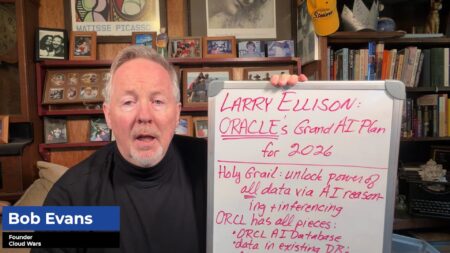
Boldly declaring his optimism for enterprise technology’s impact in bad times as well as good, IBM’s Arvind Krishna exudes the opportunistic outlook of a unicorn-y startup as his three-year effort to turn IBM into a high-speed innovation machine continues to win the hearts, minds, and wallets of customers.
With trailing 12-month cloud revenue growing at 20% to $22.2 billion, IBM clearly has a large presence in the enterprise cloud. But until Krishna’s ascendance to the CEO role in April 2020, IBM’s cloud business was more sprawling than strategic, and its anemic growth rates were clear indicators that clients were not being convinced that IBM was the cloud horse on which to bet their companies’ future.
But over the past 33 months, Krishna has jettisoned peripheral and/or low-growth businesses, simplified how the IBM sales org deals with clients, and sharpened the 112-year-old company’s focus on two booming categories: hybrid cloud and AI.
It’s also clear that Krishna — the first IBM CEO to have risen through the ranks of technologists rather than sales — is also looking just over the horizon and beyond hybrid cloud and AI to the dazzling potential of quantum computing, but doing so in an appropriately low-key fashion so as to avoid diluting the company’s concentration on its two primary capabilities.
“It’s simple: I want us to be focused on AI and hybrid cloud — those are the two vectors — and then quantum down the road,” Krishna said in a late-December video interview, which you can watch in full here.
“But what do AI and hybrid cloud mean in business terms? We want to apply AI for automation, AI for cybersecurity, and leveraging data and cloud to do the computation for sustainability.
“So it really is about using those two vectors, and building a lot of industry-specific domain knowledge through our [IBM Consulting] consultants, and then leveraging our partners again and again because I think that’s how you scale a business,” Krishna said as a lead-in to a much more-ambitious prospect.
“And that’s how you help scale the planet. That’s how we can feed more people and how we can reduce food waste. I’m no expert on that but some of my friends are and they tell me that up to 40% of food gets wasted.
“And I believe we can apply AI and computation to help improve those [food-industry supply] chains as well,” Krishna said.
Before being promoted to the CEO role, Krishna’s leadership on IBM’s technology and product-development side give him the opportunity to make IBM a leader in quantum-computing development. And while commercial applications are still a ways out, the prospect of what will be possible in the not-too-distant future colors Krishna’s overall outlook regarding IBM’s increasing significance for its clients.
“I’m really optimistic on the role of enterprise technology. Now, clearly, we’ve got a bunch of headwinds in the world: we have inflation, interest rates, we have a war, we have other geopolitics, we have supply chain issues, cybersecurity, and labor demographics,” Krishna said.
“But I can tell you that technology is actually a deflationary force against all of those forces.” As proof, he offered a few examples.
Labor Shortages Meet Automation
“So actually, I think that we are going to have a shortage of skilled people, irrespective of all the other forces,” said Krishna.
“Now in the face of that, you say, ‘Oh my God, am I just going to have perpetual low unemployment and high wages?’ And my answer is no because that’s where the equation changes with technology. Look at the Veterans Administration: they’re working with us so that they need fewer people but can get benefits and pensions to veterans faster.
“McDonald’s and other quick-serve restaurants are talking about how as hourly wages go from $10 to $12 to $15 to $20, maybe they can use a lot of technology to automate the drive-thru process,” Krishna said, “and that means more employees can focus on the cooking as opposed to on the order-taking.”
That example of order-taking versus food preparation has broader implications because it can serve as a proxy for many different types of workforce situations in which businesses are deploying automation to enable their employees to move up to higher-value positions that have more impact on customer experiences.
But then Krishna really made my head spin when he described the ways in which hyperautomation— the fusion of AI plus automation — can drive massive improvements in cybersecurity.
“We’re on the websites for a number of sporting events, and these are not transactional sites —you’re watching results, you’re watching players, and I would not have thought that those were big targets for people to do bad things.
“But a golf tournament gets 40 million cyber attacks over a weekend, which is kind of ridiculous. So you can use AI to make a security analyst 50 to 100 times more productive than they could be without AI,” Krishna said.
“So I’m optimistic that all of these things are going to help companies get more productive, help people be more productive, and all those things are going to happen along the way.”
When I asked Krishna if I heard him correctly — that cybersecurity analysts can be 50X more productive, not just 50% more productive — he confirmed that and offered some examples. You can see his fascinating description of AI’s impact by watching our full video interview which is live now.
Krishna also touched on some breakthrough work IBM is doing with CVS as it evolves from a retailer to a healthcare provider.
How Do You Deliver 40 Million Vaccines?
“CVS came to us about two years ago now and said they want to be one of the biggest providers of COVID vaccinations — and I think they turned out to be the biggest. So we asked how many vaccinations they thought they could do, and they started talking about whether it could be 10 million, 20 million, or even 40 million,” Krishna recalled.
“So we then asked, ‘How will you handle all the questions people will have: ‘Can I schedule my appointment? I have this condition, can you or can you not determine what I should do? What’s my insurance?’
“Those are reasonably complicated, not like super hard, but reasonably complicated things. If you think about a call center to handle all that, you’re talking about 10,000 people! And you can imagine what happened in the first few weeks and months, right? Instead, can you do it with a few hundred people and really have artificial intelligence take on those workloads,” Krishna said.
“So that’s why I talk about how these can be 10X or 20X” leaps in productivity.
The Growth Factor
Noting that he expects the economic downturn to be “short and shallow as opposed to long and deep,” Krishna touched on the power of modern digital technology to drive growth for businesses in a highly competitive marketplace.
In his conversations with CEOs around the world, Krishna said, the term “digital transformation,” while overused, has evolved to represent a strategy for boosting revenue.
“Can you scale your company, meaning get to more clients? Can you use technology to get to more places on the globe and improve client satisfaction without adding labor cost and all of those related overheads?
“That is what digital transformation ought to get you,” Krishna said.
“If I describe it like that to a CEO who’s thinking that he or she doesn’t want to invest during a downturn, then they start to think, ‘Wait, so that means I can scale more, and I can do more without putting on more linear cost on the labor side.”
The specifics differ by industry but Krishna was adamant that every sector has enormous opportunities to grow and boost efficiencies via digital technology.
“In an airline, can I automate more operations around how crews work, around aircraft maintenance, around maybe rebooking? Maybe there was a storm or there was something else and all of a sudden you’re gonna miss your connection—well, why not make that automated instead of standing in line or calling a call center, because that still requires people on the other side?
“And by the way, computers love to interact, so they can offer you not one but five choices,” Krishna said.
“So whether it’s an automated drive-thru in McDonald’s, or having artificial intelligence help you schedule your doctor’s appointment, or use an enterprise process to improve your pension take-up time from 10 days to 2.
“These are all examples we can leverage and use, and that’s why I’m optimistic about it going forward, not pessimistic.”
Purpose and Profit
Another subject into which Krishna was keen to dive is his belief that sustainability initiatives can serve dual masters of purpose and profit, and that business leaders need to think about those outcomes as complementary rather than mutually exclusive.
“I absolutely believe that purpose and profit go together — they’re not really contradictory at all,” he said.
“You begin to look at empty truck miles, you begin to look at freight logistics, you begin to go through the world and I believe we can achieve a 30% reduction by optimization, or we can use the word sustainable.” Citing examples from smart buildings to increased regulations in Europe around energy production and usage to the larger issue of deploying digital technology more aggressively to reduce waste, Krishna’s optimism again came through in his fusion of the formerly disparate goals of doing good while doing well.
“Let’s get rid of the friction and the physical processes — that’s a huge amount we can go after. And by the way, there’s money to be made and all that. But that’s why I say purpose and profit go together,” he said.
IBM’s Potential Feeds That Optimism
As we wrapped up, Krishna alluded to the impact of quantum “down the road” but emphasized that IBM’s two big areas of focus are the massive opportunities around AI and hybrid cloud.
“I keep coming back to what do AI and hybrid cloud mean in business terms? At IBM, we want to apply AI for automation and AI for cybersecurity. I talked about leveraging data and cloud because that’s how you could do the computation for sustainability. So it really is using those two vectors, building a lot of industry-specific domain knowledge through our [IBM Consulting] consultants, leveraging our partners again and again, because I think that’s how you scale a business,” Krishna said.
“But we should also help future-proof the world. And the reason we are investing in quantum — and we’re not the only ones; there are others — is that I believe quantum computing is going to provide another revolution in how computing with data can help change the world in even bigger ways.”
Sign up here for the CEO Outlook Digital Summit to start your free subscription and see all of the Cloud Wars Top 10 CEO Outlook interviews that will air on February 8, 2023, or upgrade to Premium and get your all-access pass to our entire practitioner analyst library of content


